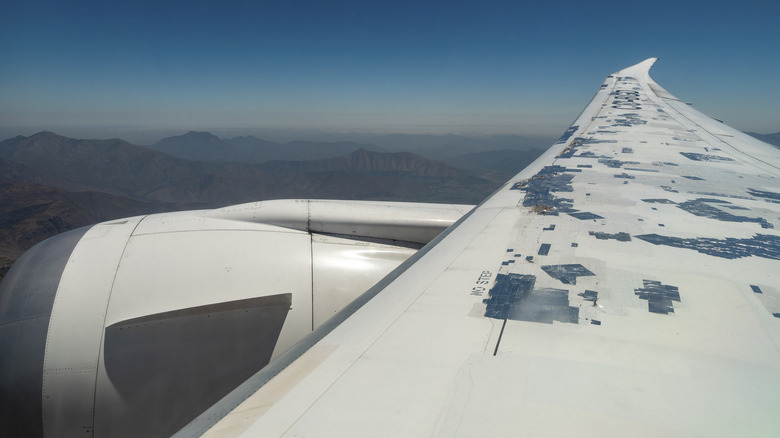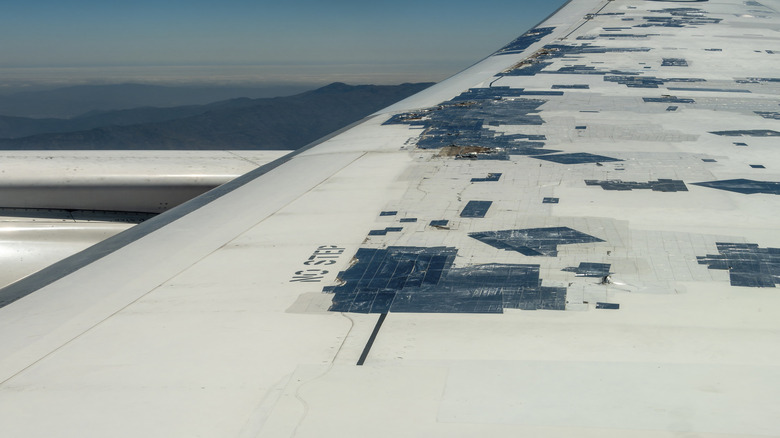Duct Tape On An Airplane Wing? It's Actually Called Speed Tape
Imagine your next vacation: you are sitting at your window seat, listening to the stewardess discussing safety protocol, when you look out to find a shocking sight: the wings are held together with what appears to be ... duct tape? Immediately, the worst-case scenarios begin to play through your head. Is the plane safe? Is this airline too poor to afford repairs? Is your pre-flight anxiety causing you to see things?
First off, don't worry. The wings aren't structurally held together by tape. But, with several high-profile plane crashes causing some passengers to debate whether air travel is still the safest way to travel, it isn't unreasonable to ask why your aircraft's wings are plastered with silver adhesive. Luckily, the appearance of this tape shouldn't be cause for alarm — a trillion-dollar industry isn't suddenly being cheap and using run-of-the-mill products from Home Depot to hold its aircraft together. Instead, what you're seeing is speed tape, a flame-retardant aluminum adhesive specifically designed for the rigors of air travel.
When speed is the name of the game
On the surface, hearing that your aircraft is being repaired with tape made of aluminum foil isn't reassuring. However, speed tape is incredibly durable and highly temperature-resistant, capable of withstandstanding temperatures between -65° and 300° Fahrenheit. In fact, speed tape is thermally conductive, meaning it actually protects the aircraft from these wild swings in temperature. It also claims that the product is highly resistant to chemicals and UV rays. Furthermore, its acrylic adhesive is crafted with the high speeds of commercial air travel in mind and can withstand winds up to 600 mph. It also isn't affected by humidity or moisture, meaning its adhesion won't ebb during the flight.
It's important to remember that speed tape is not holding the plane together. Airlines use it to make minor, nonstructural repairs, such as masking parts of the aircraft's skin that have begun to peel back due to the wear and tear of air travel. Speed tape's pliability makes it particularly adept at masking where the paint has peeled or fissured, as it is flexible enough to meld to the irregular shapes of the wings and cabin.
This is not to say that speed tape is a perfect product. Airlines can get into deep water if they depend on the adhesive to make large repairs, such as when the FAA fined United Airlines in 2002. However, its durability makes it a versatile product used in a variety of industries, including construction, aerospace, and metalworking.

